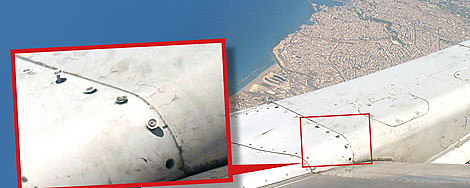Last Friday (6 June 2014), the FAA published a proposal for additional requirements that would make it less likely that someone could hack into critical electronic systems on some 737 models. The language is a bit dense, but the implication is that several models of the 737 (the 737-700, -700C, -800, -900ER, -7, -8, and -9 series) have an unusual design feature that allows access to the airplane's critical systems and data network by way of the passengers service computer systems.
It is not at all clear that this is a current danger, or if a 737 has already been hacked. For more details, you can review the Federal Register item that discusses this issue (Federal Register Vol. 79, No. 109, pages 32642-3), and for further details you can find out more in the docket folder for Docket FAA-2014-0302
What's the problem?
According to the FAA, the applicable airworthiness regulations do not contain adequate or appropriate safety standards to prevent inappropriate access to critical information systems. The special conditions that the FAA wants to add to the regulations contain additional safety standards that would presumably establish a level of safety equivalent to existing airworthiness standards.
The FAA wants your comments
The FAA would like to hear what you have to say, and invites everyone to contribute to this rule making effort. You can send written comments, data, or or other information to the FAA. While the most helpful comments would reference a specific portion of the special conditions, the FAA will consider all comments. The closing date for comments is 21 July 2014.
The FAA accepts comments online, by, fax, by mail, or it in person:
- Online: Visit this link to the comment page, or if that does not work, visit http://www.regulations.gov and search for docket number FAA-2014-0302-0001
- Mail: Send comments to Docket Operations, M-30, U.S. Department of Transportation (DOT), 1200 New Jersey Avenue SE., Room W12-140, West Building Ground Floor, Washington, DC 20590-0001.
- Hand Delivery or Courier: Take comments to Docket Operations in Room W12-140 of the West Building Ground Floor at 1200 New Jersey Avenue SE., Washington, DC, between 9 a.m. and 5 p.m., Monday through Friday, except federal holidays.
- Fax: Fax comments to Docket Operations at 202-493-2251.
Common questions about the comment process
- Can anybody leave a comment?: Yes
- Do I have to be some kind of computer or aviation expert: No
- Will my comments make a difference?: Hard to say
Additional resources
Overview at regulations.gov
FAA docket folder
Photo of Boeing 737-8ZS cockpit: Wikipedia







































